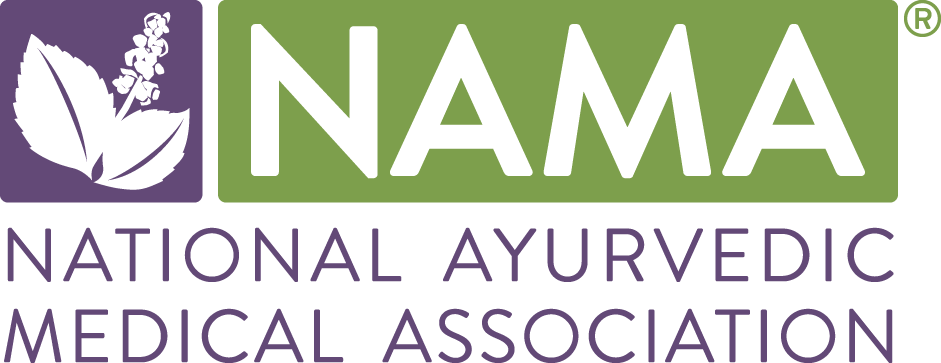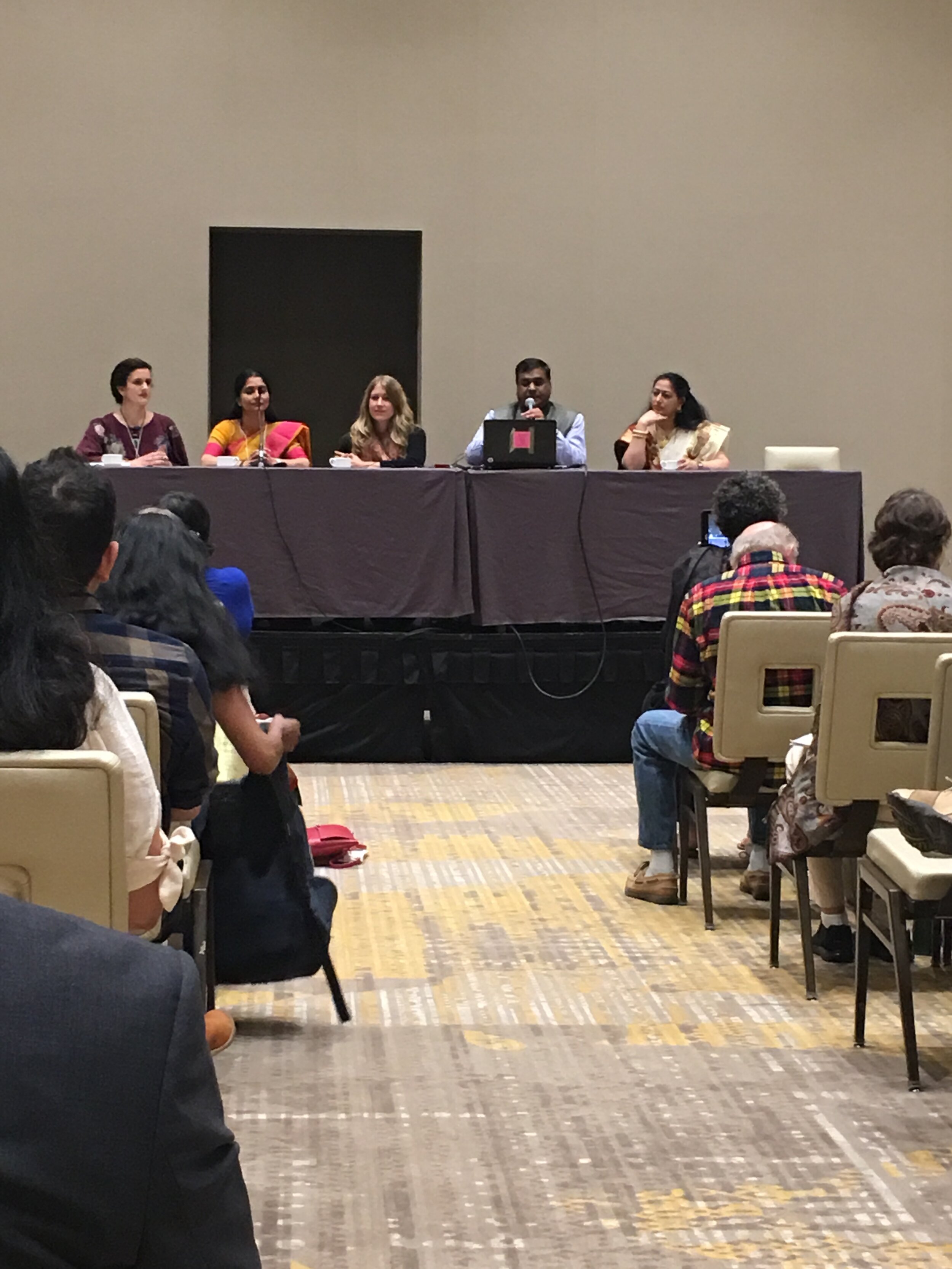by Maria Radloff
Chair – NAMA Students Subcommittee
It was through yoga that I discovered Ayurveda, and every time I practice, I think of my first teacher and all the doors he opened for me. Today I still practice ashtanga yoga, study Sanskrit, participate in a weekly Ayurvedic philosophy class, and am working on completing my AP training at Kerala Ayurveda Academy.
Ayurveda was an instant attraction for me, but it took many years to solidify my dream of attending a NAMA-recognized school. During that time, however, I did discover NAMA and longed to attend their conferences, featuring famous speakers and so many interesting topics. I was so smitten, but I was too afraid to go since I had no formal education in Ayurveda.
Fast forward ten years to when it became my dream to study Ayurveda. Not only am I now a NAMA Student Member, I am an active on a NAMA Students committee, and I have already attended two conferences and am registered for a third in April!
Community
I was a little nervous about going alone to my first conference, but a dear friend hooked me up with a roommate, and I had a few friends from other cities that would also be attending. I knew my teachers and some classmates would be there, which was also comforting.
After having attended two conferences, I can say that I have always felt included because everyone there is very friendly and welcoming. I met people at meals with whom I shared a table and at workshops, and I met other students. I now feel confident about going because there will be many familiar faces from my growing circle of friends who study and practice Ayurveda.
Spending an entire weekend with passionate Ayurvedic professionals and students is great support for me because I feel a bit isolated in my Ayurvedic community in Utah. Spending the weekend learning and sharing with such a variety of people really helps me stay connected to both the greater vision of Ayurveda and my purpose in studying it.
Good Eats
When I talk to people about Ayurveda, the subject I’m most passionate about is Ayurvedic cooking. I love food and I love encouraging people to cook and use spices. Let me tell you about eating at NAMA conferences! There is no greater joy than that of sharing an Ayurvedic meal, especially when the food is sublime. NAMA brings recipes to the chefs who prepare the meals, and the magic that happens in the kitchen produces unforgettably delicious results. There are three daily vegetarian meals that even for a snacking vata like me are fully satiating. The food is seriously the best!
Friends and teachers from Ayurveda school, 2019.
Panchakarma panelists, 2018
Friends that I knew from Phoenix who also love Ayurveda, 2019.
Learning
Because my knowledge of Ayurveda is still at the student level, I was nervous that the workshops might be over my head. That wasn’t the case. My feeling is that we hear is what we can understand, and we all get something a little different. The presentations are useful for students and practitioners at all levels. What I enjoy most is hearing from a teacher who broadens my understanding of a topic by presenting it in a new way.
I can also continue my studies after the conference by purchasing recordings of the workshops. I listen to them on my iPod while hiking, dog walking, or traveling. Knowing that I can get the recordings means that I can be fully present to the speakers and not have to worry about taking notes.
Relevance in the Modern World
The conference is the best place to hear about the role of Ayurveda in the real world, complete with real-world data and studies. This material shows why the ancient practice of Ayurveda is a practical healthcare approach for modern society. Presenters share current data about health and cultural trends. For example, during last year’s conference on Ayurveda for the Mind, the topic of social media’s psychological impact came up frequently. We were given stats on how social media affects mental health and how we can use Ayurveda to manage its effects. If you want to learn about how Ayurveda is being used as a modern healthcare tool, the conference is the place to go.
Conferences really inspire me each year to study, practice, and invest in Ayurveda as an student, because it is there that I get to experience Ayurveda through the lens of NAMA. This perspective helps me truly appreciate NAMA’s vision and purpose. I am so excited that there is work being done to create a licensed Ayurvedic career pathway in this country. NAMA is needed to help our community eliminate the legal and other barriers to the growth of Ayurveda in the U.S. It was because of my first conference that I was inspired to join NAMA as a volunteer.
Ayurvedic celebrities!, 2019.
Of course I’m sharing the photo with Robert Svaboda. Can you see my giddiness?!, 2018.
Ayurvedic Celebrities
And lastly, one of my favorite things about the NAMA conference is the chance to enjoy “celebrity sightings”! I see the authors of my favorite books and the famous Ayurvedic teachers—all of the big names in Ayurveda. Robert Svoboda was the keynote at the first conference I attended, and I am his biggest fan! He was as charming and smart in person as he is in his books. I was mesmerized. I tried to be nonchalant when I got a photo with him, but as soon as I felt my feet walking toward him, all giddy hell broke loose and I couldn’t stop smiling like a lunatic. I have since gotten my demeanor around Ayurvedic celebrities under control, but I have to admit, seeing them in person is still quite glorious!
Big Break for NAMA Student Members
If you’re a NAMA Student Member like me, you get the benefit of the biggest pricing discount NAMA offers. If you’re not, you can sign up (make sure you complete steps to become a Student Member).
After you’re all signed up as a Student Member, you’ll want to take advantage of your discount and register for Conference.
In Conclusion
Attending the NAMA conference had been a dream for so long that I do everything I can to make it happen each year. I have to plan early and budget, which can sometimes be intimidating, but I wouldn’t miss the yearly conference for anything. My experiences there are what inspires me to continue studying and practicing. As a student, I get to see what is possible. I learn from the best. I discover Ayurveda in new ways. I think it’s important for anyone studying or practicing Ayurveda to be able to attend as many conferences as possible in order to connect with other students and practitioners, share ideas, and stay in the know.
I will be attending the NAMA conference in 2020 and look forward to seeing many familiar and new faces, especially the other students!
About Author
Maria Radloff is currently an AWP student at Kerala Ayurveda Academy. Besides studying ayurveda, Maria practices and teaches Ashtanga Yoga as well as Sanskrit. She has taught at a variety of yoga studios for over ten years and has taught at many yoga teacher training programs. She also offers a regular online Sanskrit class. Besides her passion for yoga, she loves design and writing and works as a graphic designer, specializing in non-profits and yoga businesses. Her greatest love, though, is introducing Ayurveda to anyone she can reach through writing articles and teaching workshops.


















